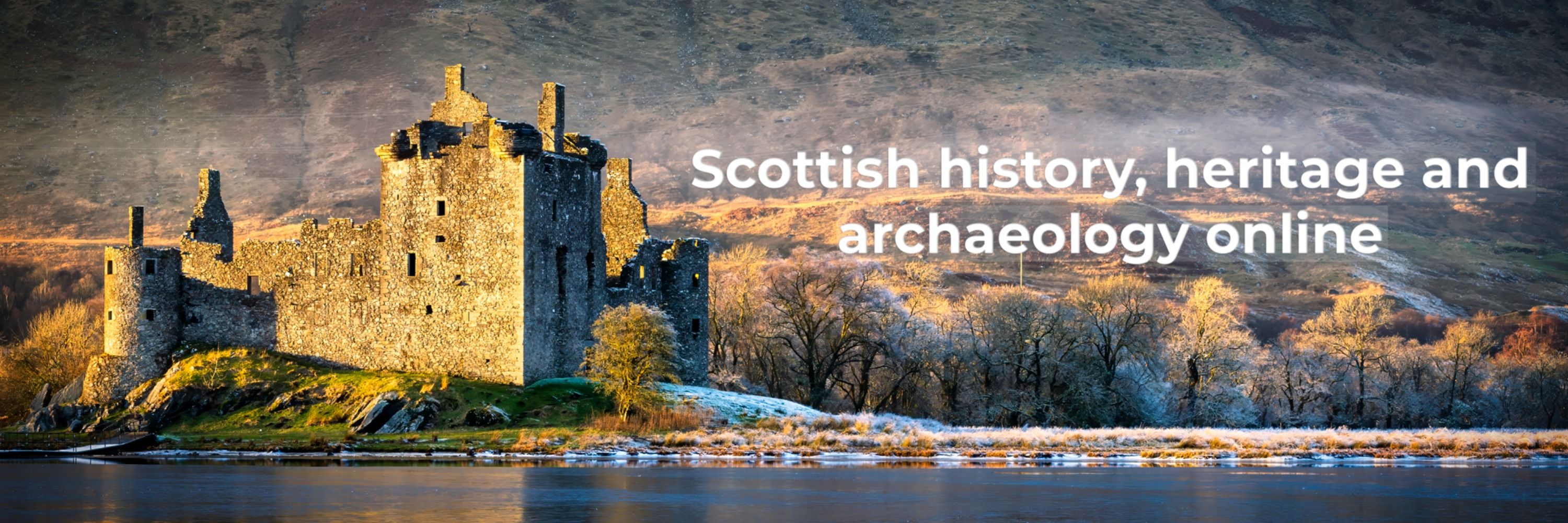
Scottish History
@scottishhistory.org
Online publication covering Scottish history, heritage and archaeology. Featuring articles, reviews, latest book releases, places to visit, events and more. Published in Ayrshire. Editor: @neilritchie.bsky.social
Reposted by Scottish History
A plan of the battle of Prestonpans by Paul Fourdrinier, based on a plan drawn by an officer of engineers who was present at the engagement. The identity of the engineer on whose map this published map is based is unknown.
📜 RA CP/MAIN/5 f.164-164b
📜 RA CP/MAIN/5 f.164-164b

September 22, 2025 at 8:57 AM
A plan of the battle of Prestonpans by Paul Fourdrinier, based on a plan drawn by an officer of engineers who was present at the engagement. The identity of the engineer on whose map this published map is based is unknown.
📜 RA CP/MAIN/5 f.164-164b
📜 RA CP/MAIN/5 f.164-164b
Reposted by Scottish History
On 13 September 1653, a Cromwellian flotilla anchored off Duart Castle, Isle of Mull, was ravaged by a storm, which sank three warships, including the Swan. The ships were supporting Colonel Ralph Cobbett's expedition to subdue Clan Maclean during the Earl of Glencairn's Royalist uprising.

September 13, 2025 at 6:02 PM
On 13 September 1653, a Cromwellian flotilla anchored off Duart Castle, Isle of Mull, was ravaged by a storm, which sank three warships, including the Swan. The ships were supporting Colonel Ralph Cobbett's expedition to subdue Clan Maclean during the Earl of Glencairn's Royalist uprising.
Reposted by Scottish History
3 September 1745: The Jacobite army marched from Blair Castle, through the Pass of Killiecrankie and on to Dunkeld. Charles Edward Stuart lodged in Dunkeld House, where he was entertained by local fiddler Niel Gow. The advance guard led by Lochiel and Keppoch arrived at Perth and secured the town.

September 3, 2025 at 4:18 PM
3 September 1745: The Jacobite army marched from Blair Castle, through the Pass of Killiecrankie and on to Dunkeld. Charles Edward Stuart lodged in Dunkeld House, where he was entertained by local fiddler Niel Gow. The advance guard led by Lochiel and Keppoch arrived at Perth and secured the town.
Reposted by Scottish History
The "Lily" floating airstrip during trials off Lamlash, Isle of Arran, on 30 August 1945. Created by R. M. Hamilton, it consisted of hexagonal buoyancy drums connected to form a flexible landing surface. It was intended to support the planned invasion of Japan.
📸 Lt D. C. Oulds / IWM (A 30255)
📸 Lt D. C. Oulds / IWM (A 30255)

August 30, 2025 at 4:48 PM
The "Lily" floating airstrip during trials off Lamlash, Isle of Arran, on 30 August 1945. Created by R. M. Hamilton, it consisted of hexagonal buoyancy drums connected to form a flexible landing surface. It was intended to support the planned invasion of Japan.
📸 Lt D. C. Oulds / IWM (A 30255)
📸 Lt D. C. Oulds / IWM (A 30255)
Reposted by Scottish History
Ready your muskets and join the Sir Arthur Erskine regiment for a tour of the site of Dunkeld's 1689 Jacobite Battle! 22-23 August 2025. For more info and to book visit: www.eventbrite.co.uk/e/dunkeld-ba...

April 15, 2025 at 1:04 PM
Ready your muskets and join the Sir Arthur Erskine regiment for a tour of the site of Dunkeld's 1689 Jacobite Battle! 22-23 August 2025. For more info and to book visit: www.eventbrite.co.uk/e/dunkeld-ba...
Reposted by Scottish History
21 August 1689: The Jacobites under Brigadier-General Alexander Cannon attacked the Earl of Angus's Regiment commanded by Lieutenant-Colonel William Cleland, holding the town of Dunkeld. The brutal urban fighting would see most of the town destroyed before the Jacobites were forced to withdraw.

August 21, 2025 at 6:50 PM
21 August 1689: The Jacobites under Brigadier-General Alexander Cannon attacked the Earl of Angus's Regiment commanded by Lieutenant-Colonel William Cleland, holding the town of Dunkeld. The brutal urban fighting would see most of the town destroyed before the Jacobites were forced to withdraw.
Reposted by Scottish History
On 16 August 1745, two companies from the 2nd Battalion of St Clair’s 1st Regiment of Foot (Royal Scots), marching to reinforce the garrison of Fort William, were attacked by a party of Macdonalds at Highbridge in the first military engagement of the Jacobite Rising of 1745.

Action at Highbridge: The first shots of the Jacobite ’45 - Jacobite Wars
On 16 August 1745, two companies from the 2nd Battalion of St Clair’s 1st Regiment of Foot (Royal Scots), marching to reinforce the garrison of Fort William, were attacked by a party of Macdonalds at ...
www.jacobitewars.com
August 16, 2025 at 2:40 PM
On 16 August 1745, two companies from the 2nd Battalion of St Clair’s 1st Regiment of Foot (Royal Scots), marching to reinforce the garrison of Fort William, were attacked by a party of Macdonalds at Highbridge in the first military engagement of the Jacobite Rising of 1745.
Reposted by Scottish History
8 August 1503: 30-year-old James IV married 13-year-old Margaret Tudor, daughter of Henry VII of England, in a ceremony in Holyrood Abbey. The wedding was portrayed as the marriage of the Thistle and the Rose by the Scots poet William Dunbar.

August 8, 2025 at 1:16 PM
8 August 1503: 30-year-old James IV married 13-year-old Margaret Tudor, daughter of Henry VII of England, in a ceremony in Holyrood Abbey. The wedding was portrayed as the marriage of the Thistle and the Rose by the Scots poet William Dunbar.
Reposted by Scottish History
Hi @scottishhistory.org I'd really appreciate a shout-out for my upcoming event @edbookfest.bsky.social on my book Connecting Scotland's History - 18 August - and available to watch online (you decide what to pay!) bit.ly/3J0amPx

Watch online: Anna Groundwater: Finding Scotland’s Place in World History
From Mon 18 Aug - Though small in landmass, Scotland and her people have had a mighty impact on the world over many centuries. In Connecting Scotland's History, Anna Groundwater demonstrates the richn...
bit.ly
August 12, 2025 at 8:04 AM
Hi @scottishhistory.org I'd really appreciate a shout-out for my upcoming event @edbookfest.bsky.social on my book Connecting Scotland's History - 18 August - and available to watch online (you decide what to pay!) bit.ly/3J0amPx
8 August 1503: 30-year-old James IV married 13-year-old Margaret Tudor, daughter of Henry VII of England, in a ceremony in Holyrood Abbey. The wedding was portrayed as the marriage of the Thistle and the Rose by the Scots poet William Dunbar.

August 8, 2025 at 1:16 PM
8 August 1503: 30-year-old James IV married 13-year-old Margaret Tudor, daughter of Henry VII of England, in a ceremony in Holyrood Abbey. The wedding was portrayed as the marriage of the Thistle and the Rose by the Scots poet William Dunbar.
Reposted by Scottish History
The 9th (Highlanders) Battalion, Royal Scots (Lothian Regiment) at Leith following their mobilisation in August 1914. At the outbreak of the war, they formed part of the Lothian Brigade (TF). The 1/9th Battalion would deploy to France in February 1915 and would first see action at Second Ypres.
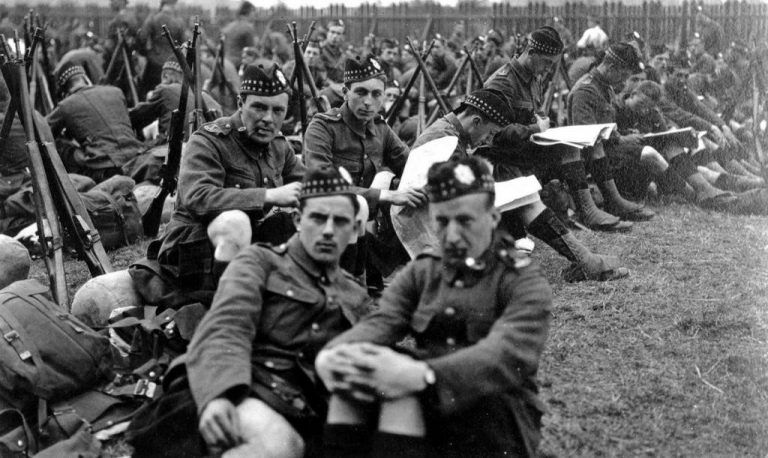
August 7, 2025 at 9:50 AM
The 9th (Highlanders) Battalion, Royal Scots (Lothian Regiment) at Leith following their mobilisation in August 1914. At the outbreak of the war, they formed part of the Lothian Brigade (TF). The 1/9th Battalion would deploy to France in February 1915 and would first see action at Second Ypres.
Reposted by Scottish History
The departure of the 1/5th (The Sutherland and Caithness) Battalion, Seaforth Highlanders from Wick railway station on 6 August 1914, heading for Bedford. The battalion was part of the Territorial Force and formed part of the Seaforth & Cameron Brigade.
📸 IWM (HU 94294)
📸 IWM (HU 94294)
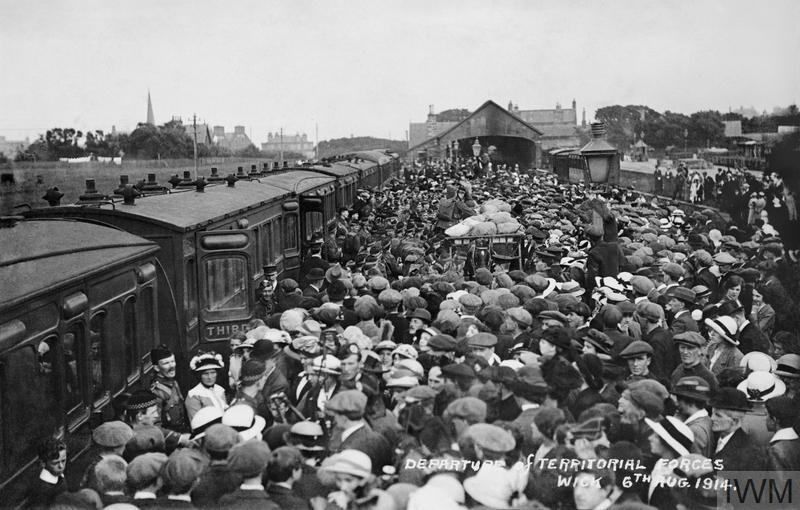
August 6, 2025 at 1:04 PM
The departure of the 1/5th (The Sutherland and Caithness) Battalion, Seaforth Highlanders from Wick railway station on 6 August 1914, heading for Bedford. The battalion was part of the Territorial Force and formed part of the Seaforth & Cameron Brigade.
📸 IWM (HU 94294)
📸 IWM (HU 94294)
Reposted by Scottish History
Captain Thomas Sheridan Riddell-Webster of the 1st Battalion, Cameronians (Scottish Rifles) at Maryhill Barracks in Glasgow in early August 1914. The 1st Battalion would leave Glasgow by train for Southampton on 13 August and would embark on SS Caledonia the following day.
📸 IWM (Q 51468)
📸 IWM (Q 51468)
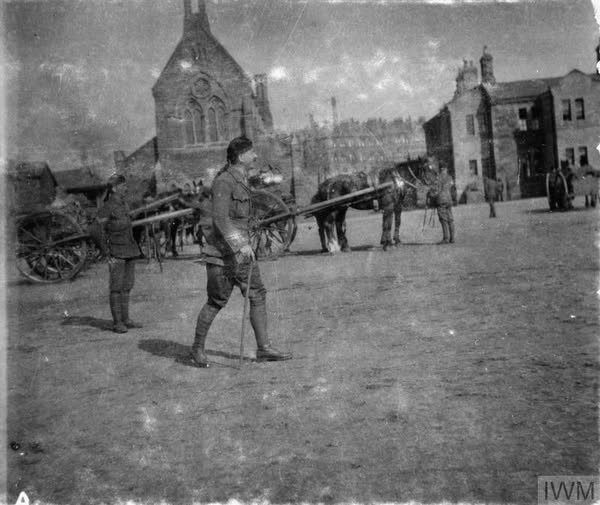
August 6, 2025 at 11:31 AM
Captain Thomas Sheridan Riddell-Webster of the 1st Battalion, Cameronians (Scottish Rifles) at Maryhill Barracks in Glasgow in early August 1914. The 1st Battalion would leave Glasgow by train for Southampton on 13 August and would embark on SS Caledonia the following day.
📸 IWM (Q 51468)
📸 IWM (Q 51468)
Reposted by Scottish History
On 15 June 1725, Russian warships and transport vessels anchored off the Isle of Lewis while en route to Spain. Rumours quickly spread that they were there to land arms and men to support a Jacobite rising, and it was feared that this was part of a larger Russian invasion.

Russia and the Jacobite scare of 1725 | Jacobite Wars
On 15 June 1725, Russian warships and transport vessels anchored off of the Isle of Lewis while en-route to Spain. Rumours quickly spread that they were there to land arms and men to support a Jacobit...
www.jacobitewars.com
July 2, 2025 at 8:08 PM
On 15 June 1725, Russian warships and transport vessels anchored off the Isle of Lewis while en route to Spain. Rumours quickly spread that they were there to land arms and men to support a Jacobite rising, and it was feared that this was part of a larger Russian invasion.
High-level masonry inspections, which are looking at the impact of climate change on historic sites, in combination with other factors, are set to begin at historic sites across Shetland this summer, beginning on 8 July.
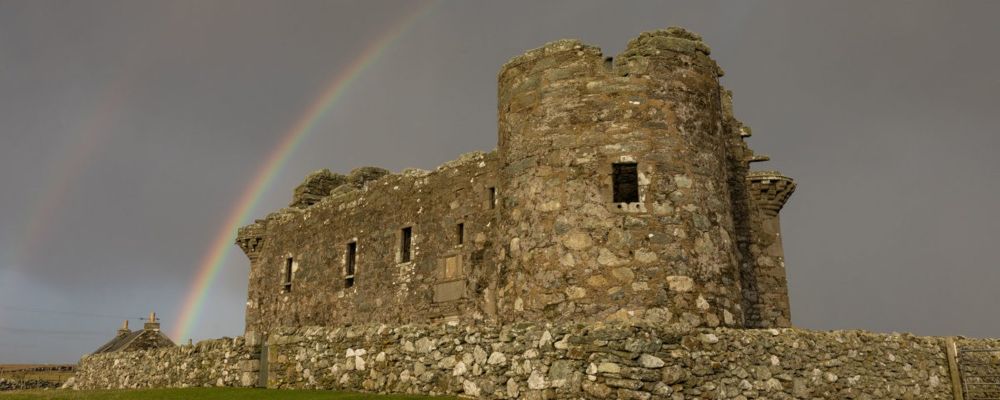
HES to conduct high-level masonry inspections on historic sites across Shetland | ScottishHistory.org
High-level masonry inspections, which are looking at the impact of climate change on historic sites, in combination with other factors, are set to begin at sites across Shetland this summer, beginning...
www.scottishhistory.org
July 2, 2025 at 8:09 PM
High-level masonry inspections, which are looking at the impact of climate change on historic sites, in combination with other factors, are set to begin at historic sites across Shetland this summer, beginning on 8 July.
Essential conservation works to the Great Hall at Kisimul Castle on Barra started on Monday 30 June, Historic Environment Scotland (HES) announced.

Conservation work to the Great Hall at Kisimul Castle on Barra begins | ScottishHistory.org
Essential conservation works to the Great Hall at Kisimul Castle on Barra started on Monday 30 June, Historic Environment Scotland (HES) announced. The project aims to implement new interventions to t...
www.scottishhistory.org
July 2, 2025 at 8:09 PM
Essential conservation works to the Great Hall at Kisimul Castle on Barra started on Monday 30 June, Historic Environment Scotland (HES) announced.
Reposted by Scottish History
2 July 1745: Lieutenant-General Sir John Cope, commander-in-chief in Scotland, received a report from Duncan Forbes of Culloden, Lord President of the Court of Session, that Charles Edward Stuart was expected to land in the western highlands that summer to attempt an insurrection.
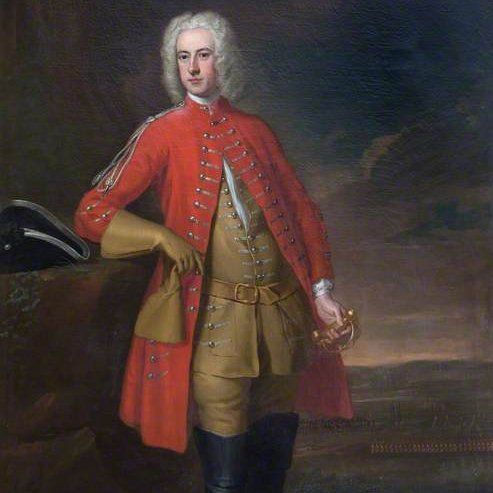
July 2, 2025 at 10:43 AM
2 July 1745: Lieutenant-General Sir John Cope, commander-in-chief in Scotland, received a report from Duncan Forbes of Culloden, Lord President of the Court of Session, that Charles Edward Stuart was expected to land in the western highlands that summer to attempt an insurrection.
Reposted by Scottish History
19 June 1746: Argyll Militia under Major-General John Campbell of Mamore arrived at St Kilda. Mamore had received intelligence that Charles Edward Stuart and other prominent Jacobites were hiding there. He found nothing but a population largely ignorant of world events.
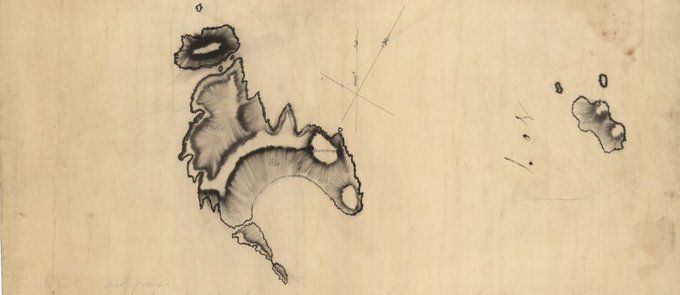
June 20, 2025 at 8:06 AM
19 June 1746: Argyll Militia under Major-General John Campbell of Mamore arrived at St Kilda. Mamore had received intelligence that Charles Edward Stuart and other prominent Jacobites were hiding there. He found nothing but a population largely ignorant of world events.
Reposted by Scottish History
Peter Tillemans' painting of the Battle of Glen Shiel commemorates Major-General Joseph Wightman's victory over the Jacobite forces under the Marquis of Tullibardine on 10 June 1719. It is one of the few extant oil paintings of the Highland landscape from the first half of the 18th century.
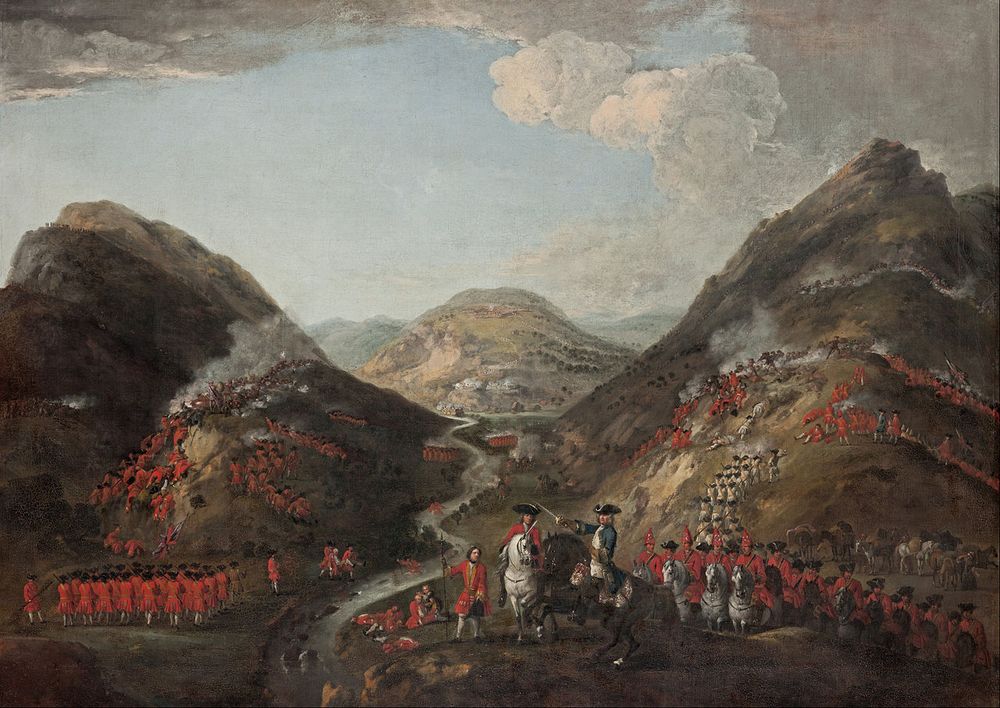
June 10, 2025 at 6:56 PM
Peter Tillemans' painting of the Battle of Glen Shiel commemorates Major-General Joseph Wightman's victory over the Jacobite forces under the Marquis of Tullibardine on 10 June 1719. It is one of the few extant oil paintings of the Highland landscape from the first half of the 18th century.
Reposted by Scottish History
Colonel James Campbell's Dragoons (Royal Scots Greys) with their distinctive mitre caps guarding Spanish and Highland captives at the battle of Glen Shiel, fought on 10 June 1719. 3 Troops of the Greys saw action under Major Patrick Robertson. Painting by Lionel Edwards.

June 10, 2025 at 6:44 PM
Colonel James Campbell's Dragoons (Royal Scots Greys) with their distinctive mitre caps guarding Spanish and Highland captives at the battle of Glen Shiel, fought on 10 June 1719. 3 Troops of the Greys saw action under Major Patrick Robertson. Painting by Lionel Edwards.
Reposted by Scottish History
A Polish soldier of General Stanisław Maczek's 1st Polish Armoured Division feeding young owls sitting on a 25-pounder at the Artillery School in Blairadam, Fife in May 1943.

May 25, 2025 at 10:01 AM
A Polish soldier of General Stanisław Maczek's 1st Polish Armoured Division feeding young owls sitting on a 25-pounder at the Artillery School in Blairadam, Fife in May 1943.
Reposted by Scottish History
15 May 1689: With the Firth of Clyde secured by Captain George Rooke's Royal Navy squadron, Captain William Young's 500-strong Scottish government expeditionary force boarded hired boats at Largs and sailed across to Tarbert in northern Kintyre, where the force disembarked later that day.
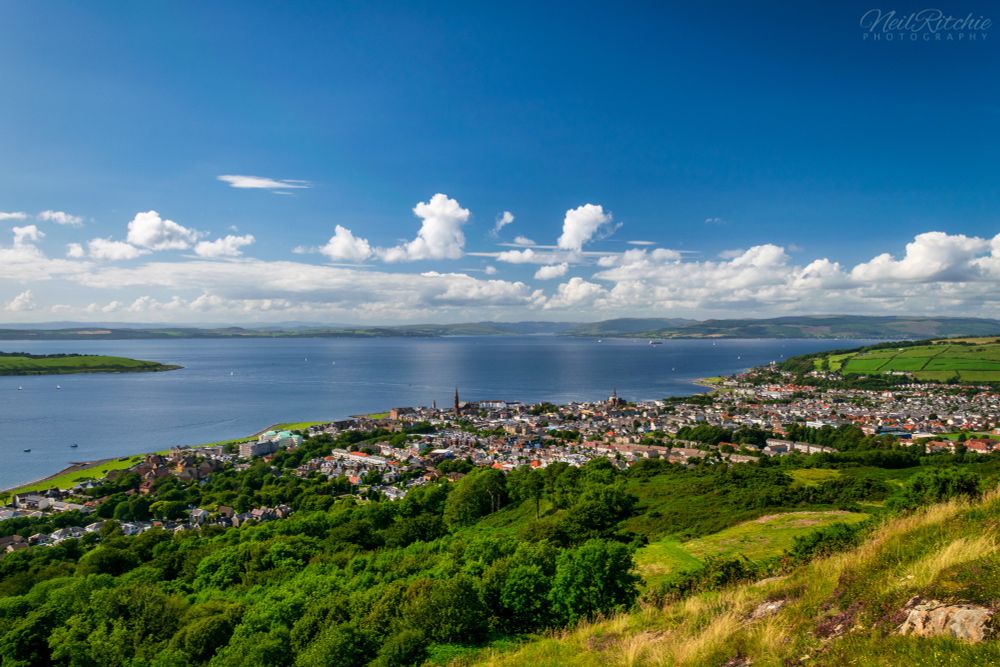
May 15, 2025 at 11:37 AM
15 May 1689: With the Firth of Clyde secured by Captain George Rooke's Royal Navy squadron, Captain William Young's 500-strong Scottish government expeditionary force boarded hired boats at Largs and sailed across to Tarbert in northern Kintyre, where the force disembarked later that day.
Reposted by Scottish History
12 May 1746: Alexander Macdonald of Glencoe's Regiment surrendered to Major-General John Campbell of Mamore at his camp in Appin. Mamore allowed the common men to return home but detained the gentlemen of the regiment. Macdonald told Mamore that he had been intimidated into joining the Jacobites.

May 12, 2025 at 7:23 PM
12 May 1746: Alexander Macdonald of Glencoe's Regiment surrendered to Major-General John Campbell of Mamore at his camp in Appin. Mamore allowed the common men to return home but detained the gentlemen of the regiment. Macdonald told Mamore that he had been intimidated into joining the Jacobites.
Reposted by Scottish History
During the Jacobite Rising of 1719, Royal Navy warships attacked and captured the Spanish-held Eilean Donan Castle in Kintail. The castle was the main Jacobite base and was cannonaded into submission before being seized by a naval landing party and blown up to prevent its further use.

The Royal Navy’s capture of Eilean Donan Castle | Jacobite Wars
During the Jacobite Rising of 1719, Royal Navy warships attacked and captured the Spanish-held Eilean Donan Castle in Kintail. The castle was the main Jacobite base and was cannonaded into submission ...
www.jacobitewars.com
May 11, 2025 at 9:01 PM
During the Jacobite Rising of 1719, Royal Navy warships attacked and captured the Spanish-held Eilean Donan Castle in Kintail. The castle was the main Jacobite base and was cannonaded into submission before being seized by a naval landing party and blown up to prevent its further use.
Reposted by Scottish History
7 May 1689: A 500-strong Scottish government force drawn from a number of regiments and under the command of Captain William Young of Lord Bargany's Regiment was ordered to be assembled in Ayrshire, ready to cross over to northern Kintyre and deal with the Jacobite threat there.

May 7, 2025 at 8:25 AM
7 May 1689: A 500-strong Scottish government force drawn from a number of regiments and under the command of Captain William Young of Lord Bargany's Regiment was ordered to be assembled in Ayrshire, ready to cross over to northern Kintyre and deal with the Jacobite threat there.

